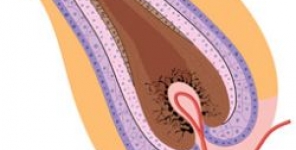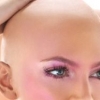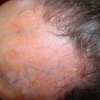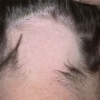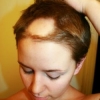Efficacia della finasteride per il trattamento dei pazienti con alopecia androgenetica che sono irsuti in altre zone del corpo
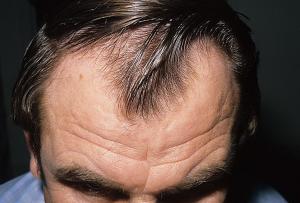 Uno studio pilota in Giappone.
Uno studio pilota in Giappone.
L'alopecia androgenetica (AGA) comporta la perdita dei capelli in modo androgeno-dipendente e la finasteride rappresenta un ottimo trattamento per questa malattia. Tuttavia, sono ancora carenti i dati riguardo l'influenza della finasteride sulla crescita dei peli in altre zone del corpo.
Obiettivi:
Studiare gli effetti della finasteride sui capelli e sui peli di altre aree del corpo.
Materiali e Metodi:
I pazienti sono stati divisi in due gruppi in base a come percepivano la loro peluria nelle altre zone oltre alla testa: gruppo A (irsuti) o gruppo B (non irsuti). La finasteride (1 mg/die) è stata prescritta ad entrambi i gruppi per almeno 6 mesi, dopo di che è stato chiesto ai pazienti di stimare gli effetti del medicinale e di riferire ogni cambiamento della propria crescita pilifera.
Risultati e Conclusioni:
Dei 37 pazienti totali, 18 sono stati inseriti nel Gruppo A e 19 nel Guppo B, suggerendo che circa la metà dei pazienti con AGA in Giappone hanno un eccesso di peluria in altre parti del corpo. Complessivamente, la finasteride orale è stata efficace (eccellente o buona) in 22 pazienti su 37 (59.5%), nello specifico in 16 pazienti su 18 (88.9%) del Gruppo A e 6 pazienti su 19 (31.6%) del Gruppo B. Per tutti i pazienti, la finasteride orale ha avuto effetto solo sulla crescita dei capelli a livello della testa e in nessun altra zona del corpo. Pertanto, la finasteride è più efficace nel trattamento dei pazienti con AGA che sono irsuti in altre parti del corpo.
Storia della pubblicazione:
Titolo: Efficacy of finasteride for treating patients with androgenetic alopecia who are pileous in other areas: A pilot study in Japan
Rivista: Indian Journal of Dermatology. doi: 10.4103/0019-5154.127677
Autori: Toru Inadomi
Affiliazioni:Ichikawa Rio Dermatological Clinic, --- F, Ichikawa Minami, Chiba, -, Japan
Abstract:
Background: Androgenetic alopecia (AGA) involves androgen-dependent hair loss and finasteride is an established treatment for the disease. However, reports of the influence of finasteride on hair growth in other areas of the body are lacking. Aims: To investigate the effects of finasteride on hair, including the head and other areas of the body. Materials and Methods: Based on whether AGA patients felt they were pileous in areas other than the head, they were divided into Group A (pileous) or Group B (not pileous). Finasteride (1 mg/day) was prescribed for both groups for at least 6 months, after which patients were asked to estimate the medicine's effects and any changes of their hair growth. Results and Conclusions: A total of 18 out of 37 patients were placed in Group A and 19 of them were in Group B, suggesting that about half of AGA patients in Japan are pileous in other parts of the body. Oral finasteride was effective (excellent or good) in 22 out of 37 (59.5%) patients overall, in 16 out of 18 (88.9%) patients in Group A, and in 6 out of 19 (31.6%) patients in Group B. None of the patients reported that oral finasteride had any effect on their hair growth other than on their head. Finasteride is more effective for treating AGA patients who are pileous in other areas of the body.
